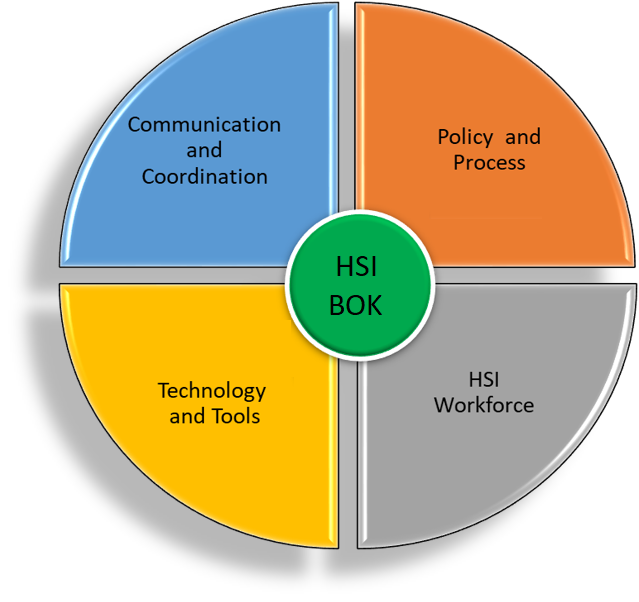Human Systems Integration
Human Systems Integration (HSI) is the systems engineering process and program management effort that provides integrated and comprehensive analysis, design, and assessment of requirements, concepts, and resources for human factors engineering, manpower, personnel, training, safety and occupational health, force protection and survivability, and habitability (DoDI 5000.95, Glossary).
These HSI domains are interrelated and interdependent and must be among the primary drivers of effective, efficient, affordable, and safe system designs. HSI integrates and facilitates trade-offs among these domains and other systems engineering and design domains but does not replace individual domain activities, responsibilities, or reporting channels (source: DAU).
The goal of HSI is to ensure human performance is optimized to increase total system performance (TSP) and minimize total system ownership costs (TOC). Incorporating HSI early in system design promotes more successful and effective transition of capability to the warfighter.


HSI in DoD Functional Policy and Guidance
The following sections discuss how HSI activity is incorporated into functional policy and guidance.
See also the SE&A Policy and Guidance page.

Human Systems Integration (HSI) Guidebook
This guidebook addresses HSI in DoD acquisition. The HSI Guidebook replaces the former DAG Chapter 5, "Manpower Planning and Human Systems Integration." HSI seeks to consider the human element in all phases of system acquisition and can provide significant benefits including improved use of manpower, reduced training costs, reduced maintenance time, and improved user acceptance. For each of seven DoD HSI domains, the guide provides best practices and explains how HSI can help minimize total ownership cost (TOC) and optimize total system performance (TSP).
Technical Report: A Human Systems Integration Perspective for DoD Knowledge Management Practice
Based on the Joint HSI Working Group’s efforts, this technical report provides a summary of lessons learned and an HSI perspective on deploying a knowledge management approach for a discipline, community, or initiative body of knowledge and community of practice.
Joint HSI Steering Council and Working Group
The Joint HSI Steering Council (JHSISC) chartered the Joint HSI Working Group (JHSIWG) in 2012 as a cross-Service forum for defense and Federal agencies to develop recommendations for DoD HSI planning, policy, and guidance; to oversee and encourage effective and proactive HSI process management; and to support the DoD HSI initiatives.
The JHSIWG conducted an HSI needs analysis resulting in a Capabilities-Based Assessment (CBA) report that addresses the following:
- Institutionalize an HSI body of knowledge.
- Standardize HSI best practices across the Services.
- Develop career certification and career paths/billets for HSI workforce supported by a persistent training function.
- Provide and maintain tools, databases, and processes to support HSI analyses early in acquisition.
- Implement a professional, coordinated HSI outreach and marketing function.

The HSI community works to address the CBA and supports S&T capability development areas such as the following:
- Human‐machine designs for mission effectiveness and optimal warfighter interactions
- Inclusion of machine learning and artificial intelligence for advanced teaming
- Sensory, cognitive, and physical workload impacts to Warfighter performance and measurement approaches to assess and improve team effectiveness and survivability for multi‐domain operations
- Assessment, education, and training advancements, to include synthetic environments

Contact Us
For more information, contact osd-sea@mail.mil using the following subject line: Attn: HSI
Office of the Under Secretary of Defense,
Research and Engineering (OUSD(R&E))
3030 Defense Pentagon, Washington, DC 20301-3030
Contact Us
Contact Us
Information for the USD(R&E):
Contact OUSD(R&E) Staff
Social Media: @DoDCTO on Twitter
For website issues: Contact Webmaster





